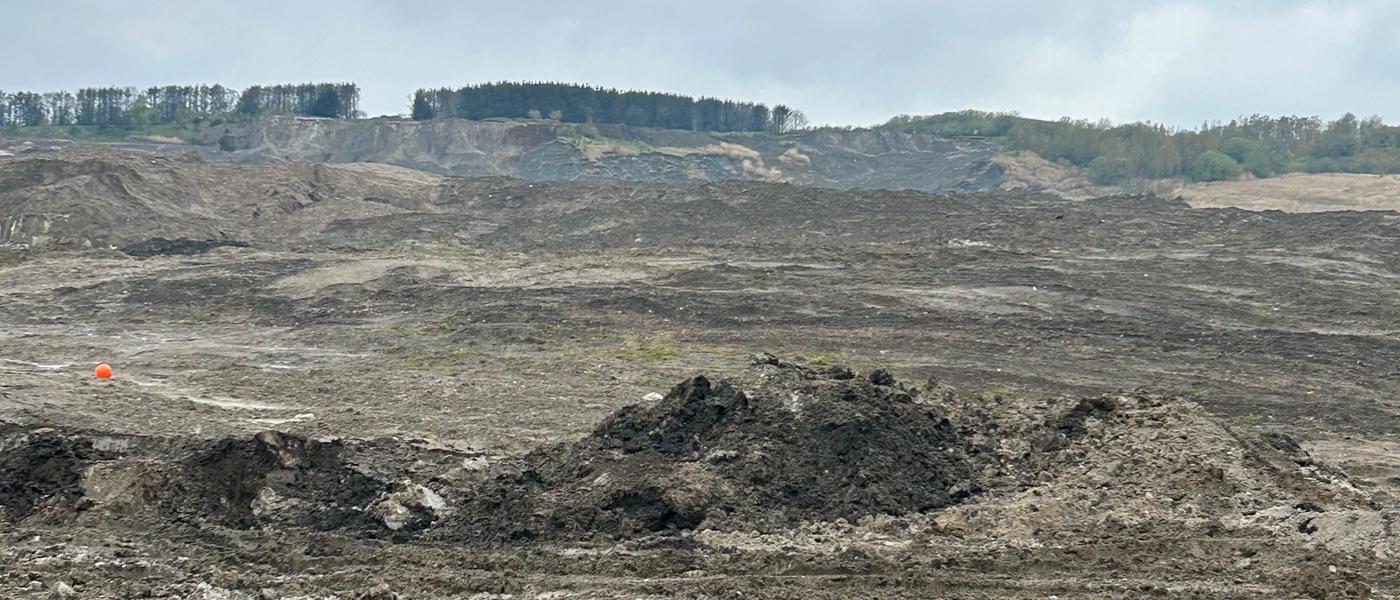
Massive landslide headed for the village - then they wanted to go bankrupt
Nordic Waste applied a week after the disaster
Christina Nordh
Published 2024-04-27 15.48
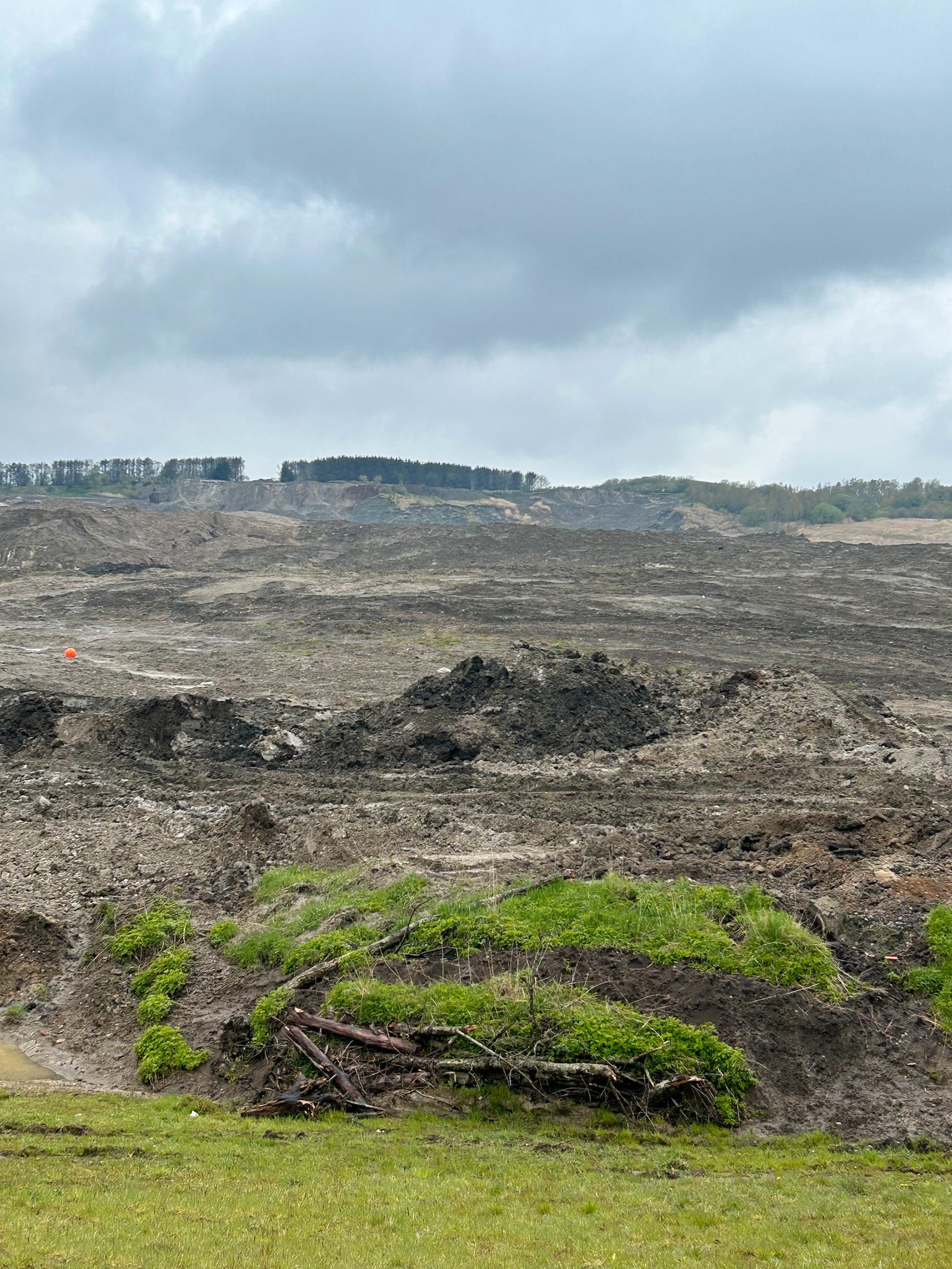
ØLST, RANDERS, Denmark. It wasn't something anyone wanted for Christmas.
Millions of tons of rain-heavy earth suddenly started moving towards the village and the church from the 12th century.
The landslide was approximately 600 meters wide and equally deep.

Here, parts of the country road into the village are buried under several tons of soil. The country road he says lifted two meters into the air as the earth masses pressed under it.
The race started up at the edge of the forest. Today, fire yellow buoys are placed at regular intervals throughout the race area, so that you can measure how the earth moves.
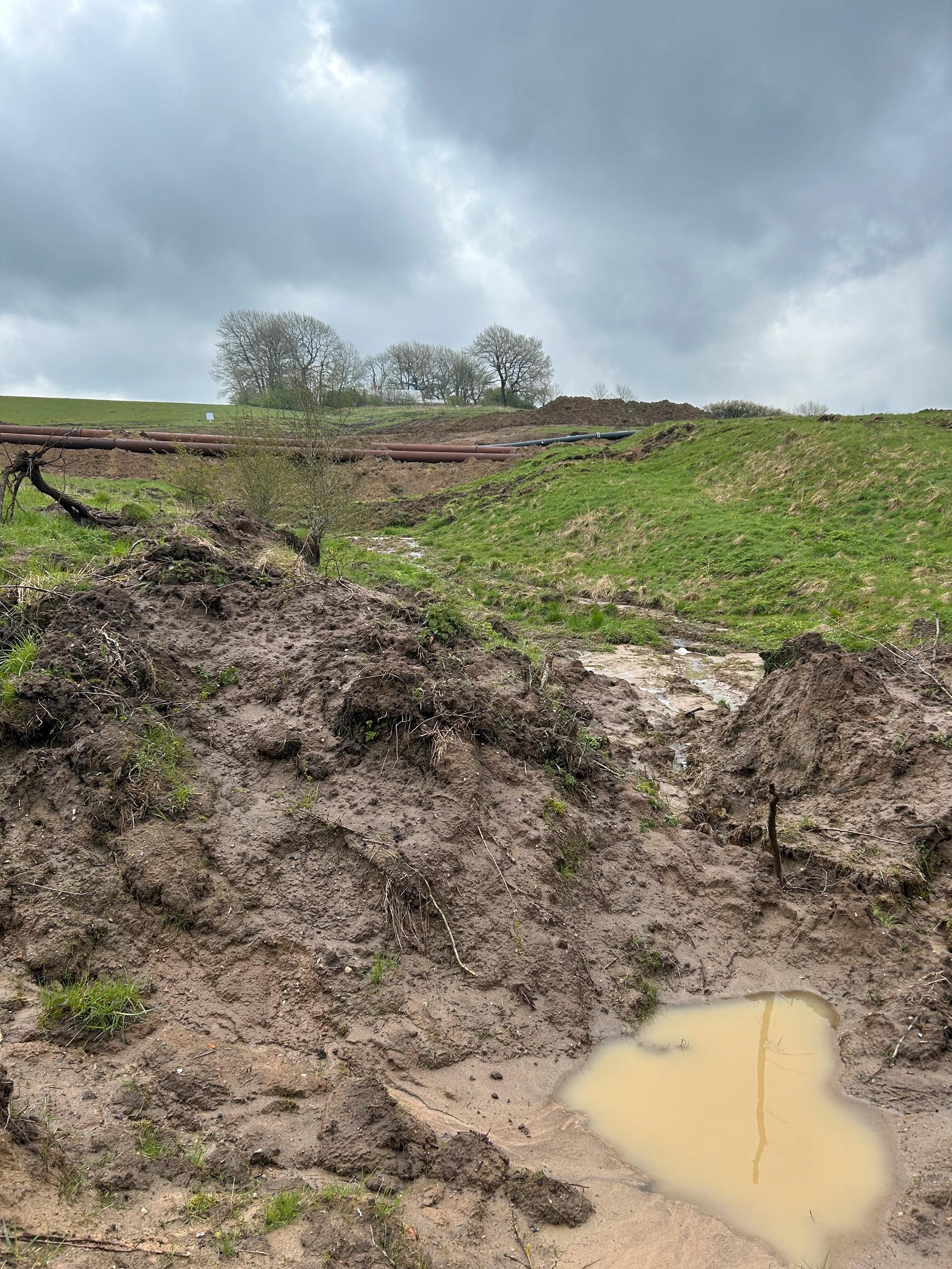
Jesper Kaas Schmidt points to how the municipality has been forced to lead the clean water from Alling å in large pipes past the soil masses, as a kind of by-pass. A newly built dike separates the clean water from the contaminated water that has been found to contain PFAS. In the soil there were microfillers, a residual product from cement.
Last year was the wettest ever in Denmark. According to statistics from 1991–2020, the country normally receives an average of 759 millimeters of precipitation per year, reports Danmark's radio. Last year, 905.7 millimeters fell.
But the massive landslide, which moved up to six million tons of soil, is not suspected to be solely due to the rainfall record. It could also be that the soil has been compacted incorrectly - and too steeply.
In the area, the company Nordic Waste had permission to trade in soil. On the eleventh of December, the company notified Randers municipality of a "significant landslide" on the company's land that could lead to extensive damage.
The municipality stated that Alling å was in the danger zone. It was partly about the risk of flooding - in the river, 2,500 liters of water flow per second in dry weather - and partly about a concern that the soil from Nordic Waste would contaminate the water in the river and lead to the death of aquatic life.
On December 19, 2023, Nordic Waste handed over responsibility for the area to Randers in order to gain control over the landslide and stop a threatening environmental disaster, writes Danish TV2.
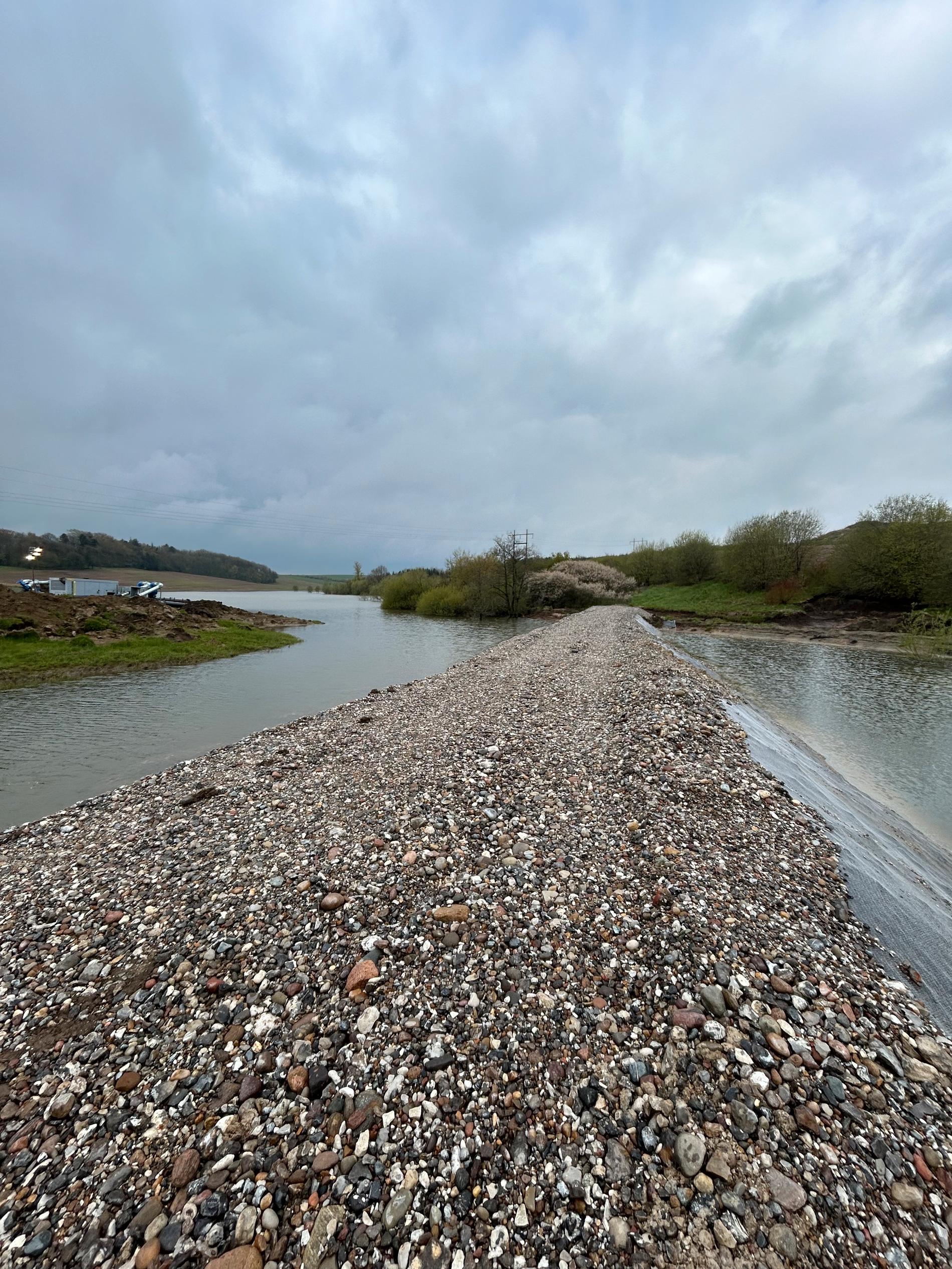
When the contaminated soil slid down the slope, some ended up in Alling å, now a dike has been built to separate the contaminated soil from the healthy water and save the aquatic animals. Photo: Christina Nordh
On January 15, a report came from the consulting company COWI in which the total cost of driving away all the fill material from the landslide is estimated to amount to 2.2 billion Danish kroner, roughly 3.4 billion SEK.
The next day, the Folketing set aside 205 million DKK to stop the environmental disaster. The politicians believed that Nordic Waste would pay the rest of the bill.
But three days later, on January 19 this year, Nordic Waste's owner, United shipping & trading company (USTC), filed for bankruptcy. According to the company, due to a "natural disaster".
Responsible company in bankruptcy
But a report by EUS, independent research institution within the Ministry of Climate, Energy and Supply, on 22 January contradicts this. According to the report, it was instead about the deposition of soil as the primary cause of the landslide. As early as the spring of 2023, approximately 90,000 square meters of soil had collapsed in the area.
On January 22, Nordic Waste went bankrupt. On the same day, Prime Minister Mette Frederiksen said:
- The municipality of Randers is facing an enormous task and they should not have to handle it alone. Therefore, we also regard it as a national matter.
Now the landslide becomes a court case. According to a law firm hired by the municipality of Randers, Nordic Waste has not followed the environmental regulations and the company is responsible for this and for remedying the environmental destruction.
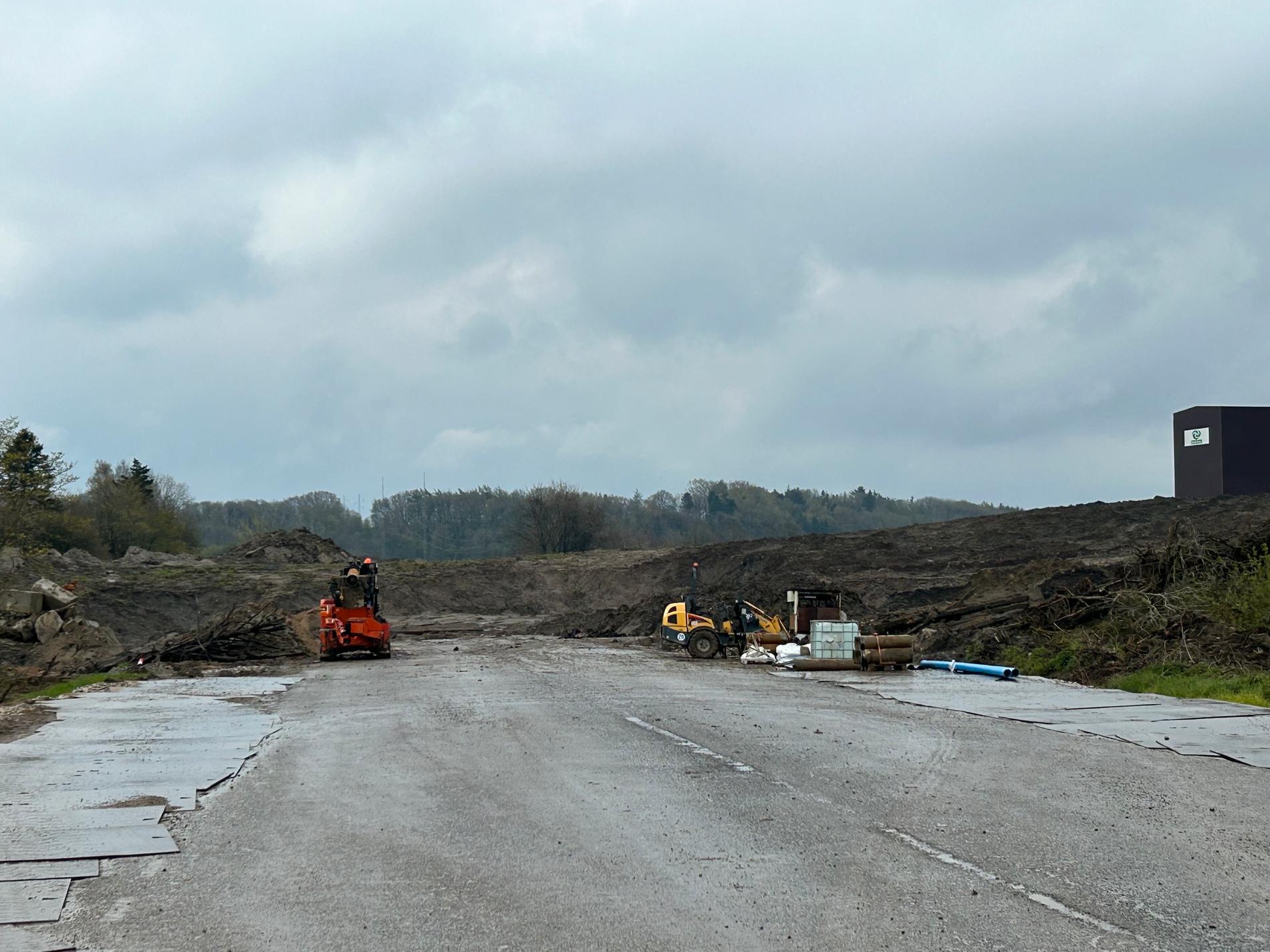
Here but no further. The powerful landslide lifted up the road in and out of the village of Ølst and then buried it under thousands of tons of earth. Photo: Christina Nordh
In the meantime, the municipality is digging its way bit by bit to restore the country road in and out of Ølst.
On Wednesday, Denmark's Environment Minister Magnus Heunicke said at a press conference that a promise from the state to pay a larger part of Randers municipality's bill for the landslide would be "hasty".
- After such a plan is presented, the Swedish Environmental Agency must review it from an environmental perspective. Is this the right plan? And then we will assess the financial structure, he says.
Cost hundreds of millions already
Since the landslide, the Danish state has set aside DKK 200 million for the environmental disaster, corresponding to approximately SEK 312 million. DKK 149 million is a contribution to the municipality of Randers.
The municipality itself expects that the handling could lead to a loss of 370 million Danish kroner, 577 million SEK.
- We need help, says mayor Torben Hansen in Randers to danish TV2.
He cannot promise that the 99,391 residents of the municipality will not suffer financially.
Since the landslide, the Danish state has set aside DKK 200 million for the environmental disaster, corresponding to approximately SEK 312 million. DKK 149 million is a contribution to the municipality of Randers.
The municipality itself expects that the handling could lead to a loss of 370 million Danish kroner, 577 million SEK.
- We need help, says mayor Torben Hansen in Randers to danish TV2.
He cannot promise that the 99,391 residents of the municipality will not suffer financially.
Inga kommentarer:
Skicka en kommentar